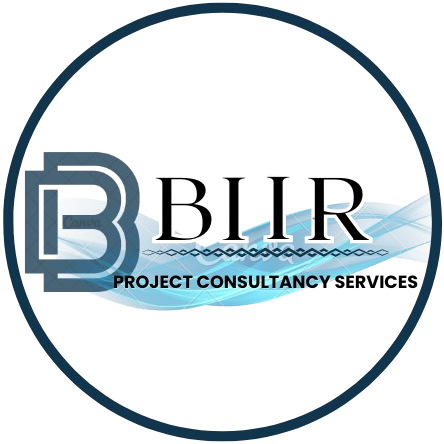-
0 Comments
Introduction
As plastic pollution becomes a global concern, biodegradable tableware emerges as a sustainable solution. These products, made from renewable resources like banana leaves, rice husk, and sugarcane bagasse, decompose naturally, reducing environmental impact. BIIR Project Consultancy Services leads businesses in establishing efficient and profitable biodegradable tableware units.Read More
Project Location
Choosing the optimal location for a biodegradable tableware manufacturing unit is essential. Proximity to raw materials such as agricultural residues and plant fibres, accessibility to transportation networks, and availability of utilities are critical factors. BIIR Project Consultancy Services helps identify locations that maximize efficiency and minimize costs.
Uses and Applications
Biodegradable tableware is used in various settings:
- Food and Beverage Industry: Restaurants, cafes, and catering services.
- Events and Gatherings: Eco-friendly alternatives for disposable plates, cups, and cutlery.
- Household Use: Daily use by environmentally conscious consumers.
SWOT Analysis
Strengths:
- Environmentally friendly.
- Increasing consumer demand for sustainable products.
- Supportive government policies.
Weaknesses:
- Higher production costs compared to plastic.
- Limited awareness in certain regions.
Opportunities:
- Expanding market for eco-friendly products.
- Potential for innovation in materials and designs.
Threats:
- Competition from other biodegradable products.
- Fluctuations in raw material availability.
Risk Assessments
Key risks include:
- Supply Chain Risks: Ensuring consistent supply of raw materials.
- Regulatory Risks: Adhering to environmental regulations.
- Market Risks: Competing with established plastic products.
Economic Benefits and Justification
Establishing a biodegradable tableware unit offers numerous economic benefits:
- Job Creation: Generates employment opportunities in manufacturing and distribution.
- Revenue Generation: Growing market demand leads to increased sales.
- Cost Savings: Reduction in long-term waste management costs.
Social Benefits and Justification
Social benefits include:
- Environmental Protection: Reduces plastic waste and pollution.
- Health Benefits: Avoids harmful chemicals found in plastic products.
- Community Development: Supports local economies through job creation.
Future Challenges
Anticipated challenges include:
- Technological Advancements: Keeping up with innovations in biodegradable materials.
- Market Penetration: Educating consumers and increasing market share.
- Regulatory Changes: Adapting to new environmental regulations.
Market Survey
Our market survey indicates a growing demand for biodegradable tableware, driven by increased environmental awareness and supportive policies. Key markets include North America, Europe, and emerging economies in Asia.
Export & Import Figures
Export opportunities are abundant, particularly in regions with stringent environmental regulations. Import figures show increasing demand for raw materials like bagasse and banana leaves.
Export & Import Statistics
Detailed statistics reveal trends in the import of raw materials and export of finished products, highlighting key markets and growth opportunities.
Manufacturing Process
The manufacturing process involves:
- Raw Material Collection: Sourcing agricultural residues and plant fibers.
- Pulping: Breaking down raw materials into pulp.
- Molding: Shaping the pulp into tableware using molds.
- Drying and Finishing: Ensuring products are durable and ready for use.
Process Flow Diagram
- A process flow diagram provides a visual representation of the manufacturing steps, ensuring clarity and efficiency in production.
Suppliers of Plant & Machinery
We identify reliable suppliers for:
- Pulping Machines
- Molding Equipment
- Drying Ovens
Suppliers of Raw Material
- Reliable sources for raw materials like banana leaves, rice husk, and bagasse are crucial for uninterrupted production.
Photographs/Images for Reference
- Visual references of machinery, raw materials, and finished products enhance understanding and planning.
Plant Layout
A well-organized plant layout includes:
- Production Section: Dedicated areas for pulping, molding, and drying.
- Raw Material Storage: Secure storage for raw materials.
- Finished Product Storage: Areas for storing packaged tableware ready for distribution.
- Auxiliary Facilities: Including administrative blocks, laboratories, and security rooms.
Annexures
- Cost of Project and Means of Finance
- Profitability and Net Cash Accruals
- Assessment of Working Capital Requirements
- Sources and Disposition of Funds
- Projected Balance Sheets
- Profitability Ratios
- Break-Even Analysis
- Sensitivity Analysis-Price/Volume
- Shareholding Pattern and Stake Status
- Quantitative Details-Output/Sales/Stocks
- Product wise Domestic Sales Realisation
- Total Raw Material Cost
- Raw Material Cost per unit
- Total Lab & ETP Chemical Cost
- Consumables, Store etc.
- Packing Material Cost
- Packing Material Cost Per Unit
- Employees Expenses
- Fuel Expenses
- Power/Electricity Expenses
- Royalty & Other Charges
- Repairs & Maintenance Expenses
- Other Manufacturing Expenses
- Administration Expenses
- Selling Expenses
- Depreciation Charges – as per Books (Total)
- Depreciation Charges – as per Books (P & M)
- Depreciation Charges – as per IT Act WDV (Total)
- Depreciation Charges – as per IT Act WDV (P & M)
- Interest and Repayment – Term Loans
- Tax on Profits
- Projected Pay-Back Period and IRR
Conclusion
BIIR Project Consultancy Services is committed to helping you navigate the complexities of establishing a biodegradable tableware manufacturing unit. From site selection to market analysis and financial planning, our expertise ensures a robust and sustainable project that aligns with global environmental goals. Partner with us to turn your vision of a greener future into reality.

